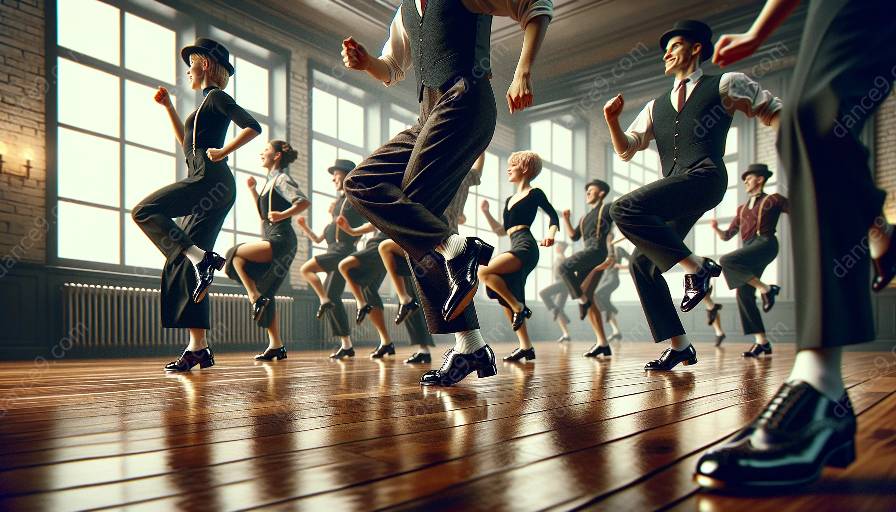Tap dance is a rhythmic and dynamic form of dance that not only offers a high-energy workout but also serves as a fantastic way to improve musicality. Musicality, in the context of dance, refers to a dancer's ability to express and embody the musical elements such as rhythm, dynamics, and phrasing. Through the intricate footwork, syncopated rhythms, and the emphasis on musical timing, tap dance provides a unique opportunity for individuals to develop a deeper understanding and connection with music.
Enhancing Rhythm and Timing
Tap dance requires dancers to create rhythms through the sounds of their shoes by striking the floor. This direct physical connection with creating music fosters a strong sense of rhythm and timing. As tap dancers work on perfecting their footwork and syncopation, they naturally become more attuned to the nuances of timing within music. This heightened awareness and understanding of rhythm can be transferred to other dance forms, musical instruments, or any activity that involves timing and coordination.
Improving Coordination and Balance
The intricate footwork and balance required in tap dance not only make for an impressive visual performance but also contribute to the development of coordination and balance. As dancers learn to control the varied movements of their feet while maintaining poise and grace, they improve their overall physical coordination. This enhanced coordination is essential for interpreting and expressing music through movement, making tap dancers not only adept in their footwork but also in their ability to seamlessly integrate with musical compositions.
Expressing Musical Dynamics
Great tap dancers are not only technically proficient but are also able to interpret and express the dynamics of music through their movements. By focusing on tonal variations and dynamic shifts within the music, tap dancers can reflect these musical nuances through their footwork, creating a visual representation of the music. This ability to embody the musical dynamics allows dancers to engage more deeply with the music and convey the emotional essence of the sound through their movements.
Developing Musical Interpretation
Just as musicians interpret and infuse their unique style into their performances, tap dancers have the opportunity to develop their musical interpretation skills. Through tap dance, individuals can explore different styles of music, from swing to jazz to contemporary, and then translate the rhythms and melodies into their dance. This process of musical interpretation not only broadens their dance repertoire but enriches their understanding and appreciation of diverse musical genres.
Cultivating Creative Expression
Tap dance nurtures a sense of spontaneity and creativity in dancers, encouraging them to interpret the music in their own unique way. As dancers navigate through improvisational elements and rhythmic patterns, they develop an expressive freedom that allows them to connect with music on a deeply personal level. This creative aspect of tap dance not only strengthens musicality but also fosters a sense of individuality and artistry.
Integrating Tap Dance into Dance Classes
For dance instructors and enthusiasts seeking to enhance musicality, integrating tap dance into their classes can be immensely beneficial. By incorporating tap as part of a comprehensive dance curriculum, instructors can provide students with a well-rounded approach to musicality, rhythm, and expression. It offers a distinctive opportunity for students to enrich their understanding of music and movement, while simultaneously building physical coordination and agility.
Conclusion
Tap dance, with its rich rhythmic tapestry and dynamic footwork, serves as a powerful catalyst for improving musicality. From honing rhythm and timing to expressing musical dynamics, tap dance offers a multifaceted platform for individuals to engage with and interpret music through movement. By embracing the intricacies of tap dance, individuals can elevate their musicality, expand their creative expression, and develop a deeper connection with music, making it a valuable addition to dance classes and a rewarding artistic pursuit.













































































